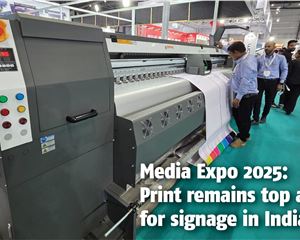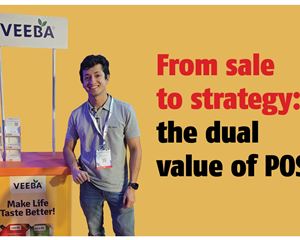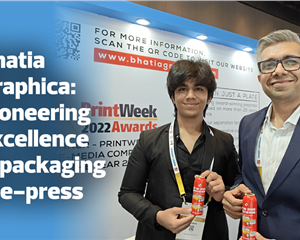Looping in the stakeholders
A circular economy is a system where we close the loop on the production systems and materials used so that they don't lose their value downstream. This requires system and design rethinking. To initiate this, WhatPackaging? hosted the first edition of Circular Economy Forum on 2 December 2019
13 Dec 2019 | By WhatPackaging? Team
Creating a circular economy
During his opening comments at the Circular Economy Forum (CEF), Gaurav Luniya of Manjushree Technopack clearly shed light on the ecosystem required to create a circular economy.
Luniya said, “Whenever one speaks of India, we talk about its consumption story, and while there has been an under penetration of consumption, the consumption has grown. Now, with this growth comes the problem of waste generation and disposal. Some private surveys point to a number of about 50,000mt of plastic waste generation which is close to the size of 50 football fields stacked to a height of 15 feet.”
The anti-plastic perception is out there and there is also emphasis on EPR. Brands are committing to a timeline to prevent usage of certain kinds of plastics but without having a concrete plan of action. This is an area where the entire industry is working to come with a clear interpretation of the problem and the steps needed to remedy it.
While all this is happening, Luniya feels, “The ecosystem is hardly equipped with the ability to bring back plastic in the form in which it was initially used. This is what we call as circular. Right now whatever plastic is collected gets downcycled which means it is transformed into a lesser grade output. These may be in road-making, tar making, as calorific value or in durables.”
Gaurav Luniya of Manjushree Technopack
Luniya explained, “Plastic is not a bad thing, the problem is disposal. Other materials such as glass, paper, metal have much larger environmental impact. Manufacturing of plastics is environmentally friendly. It's the disposal that needs to be fixed.”
According to Luniya, the entire collection system in India is fragmented. The waste collection system has to be centralised so that waste collectors can be incentivised in a better way. The recycling process lacks scientific methods and practices and brands don’t prefer using PCR content in their packaging. For EPR to be successful, brands need to have end-to-end visibility of their products.
“Once a good collection ecosystem is established, we will be in a position to demonstrate to the brands that their packaging is coming back intact and brands will be able to deliver on their responsibility,” he said.
As a leader in rigid plastic packaging, Manjushree Technopack has taken steps to develop this ecosystem. Luniya said, “ We have created a platform called Karo Sambhav to engage consumers on waste management. We have also invested in a 5,000mt plant for PP and PE recycling. Brands are very excited about it. We have already booked the entire capacity even as the plant is yet to start operations. As FSSAI issues guidelines on food applications, we would like to ramp up PET recycling as well.”
Printing: The elephant in the room
Ganesh Kumar from DQS India
Ganesh Kumar from DQS India, focused on circular economy for paper and paperboard. According to Kumar, every year USD16.2 billion of paper and paperboard are thrown as they can’t be recycled. “While everyone is concerned about plastics, we need to also speak about paper as this is a sizeable problem and solutions are available,” he said.
Kumar said, “Historically, whenever scientists and thinkers pointed towards major phenomenon or discoveries, they were met with objections, rejected and at times ridiculed — be it Newton when he proposed the theory of gravitation or Darwin’s Theory of Evolution. Similarly, circular economy is one of those ideas which is often not taken seriously or is rejected outright.”
He shed light on the importance of circular economy by comparing it with the rule of three taught in adventure sports which says humans can survive without air for three minutes, without water for three days and without food for three weeks. If we put this into perspective, with the recent climatic events, it is the right time to speak about sustainability. He also linked the printing processes to the elephant in the room, where everybody sees, but nobody talks about it. According to Kumar, printing is the single largest culprit affecting the recycling of paper and paperboard.
"When paper is printed with inks, coatings, especially UV coatings it becomes very difficult to recycle; 45% of it turns into a poisonous sludge. Many of the things that happen at printing don’t come on the radar because brands think gate-to-grave rather than cradle-to-cradle,” he said.
Kumar concluded, “Just saving 100 sheets per makeready can reduce upto 77mt of carbon emissions. Switching to fixed pallette printing can avoid frequent cleaning of inking trains. Small changes can add up big time in reducing emissions and also create savings for the converters.”
Plastic industry’s perspective on circular economy
Hiten Bheda of Vinit Performance Polymers
Hiten Bheda of Vinit Performance Polymers said that circularity is nothing but maximising the resource efficiency of a material.
He said, “Currently, close to 10% of plastic materials, globally, are being recycled, and the rest goes to landfill or oceans. The uncontrolled consumption of plastics has a direct impact on the environment. And hence the concept of resource efficiency and circularity is being discussed on a large scale.”
According to an Ellen MacArthur Foundation report, shared by Bheda, the circular economy is gaining growing attention as a potential way for society to increase prosperity, while reducing demands on finite raw materials and minimising negative externalities. Such a transition requires a systemic approach, which entails moving beyond incremental improvements to the existing model as well as developing new collaboration mechanisms.
He emphasised on the behavioural change of consumers as an important aspect for circular economy, and referred to an Ipsos survey report that said, 80% urban Indians hold manufacturers accountable for recycling and reuse of packaging. “The industry has only been focusing on how to utilise plastics as an economic way of production, but now, the narrative has changed to its re-use and recycling,” added Bheda.
Bheda mentioned the Indian market scenario, where brands are opting for smaller and smaller unit pouches to adapt to the cut-throat competition. And this practice has increased plastic packaging. “We are talking about USD five trillion economies. But every economy that has transpired in the last century has had plastic as its pillar. Thus, eradicating the use of plastics and achieving a USD five trillion economy can't go hand-in-hand.”
Bheda raised a concern that downguaging has been in practice for the last two decades, but it has reached a point of saturation, and new measures have to be implemented soon.
Bheda concluded his session by stating, “The greatest threat to our planet is to wait for someone else to save it.” And urged the industry to be proactive in anticipating and implementing sustainable practices, “If you are a brand, don't wait, because you need to look at the larger canvas and preempt the regulations.”
Printing: The elephant in the room
The cost of circularity
PN Sridharr from ITC Paperboard and Specialty Papers Division
PN Sridharr from ITC Paperboard and Specialty Papers Division enumerated the efforts ITC takes in order to facilitate circular economy. Currently, ITC has 8.2 lakh hectares of sustainable plantations which is regrown every four years.
Sridharr said, “There is a cost attached to circularity. The journey begins with saplings. There are 104 varieties of eucalyptus saplings that have been developed to suit various soil types and ensure that the taproot does not go below two metres and deplete groundwater. ITC gives 6.5 crores saplings every year at a subsidy of Rs 1.5 per sapling. Then we invest in farmer education and extension services to educate the farmer on intercropping based on soil type.”
According to Sridharr, ITC follows the CII GreenCo certification, which guides its unit across 10 parameters, the most important of which are water and energy. “Anybody can adopt this programme. We realised that the minute we start saving energy, it started adding to our bottom lines.”
ITC also undertakes product stewardship as customers have started asking questions on carbon emissions. “There are tracking mechanisms in place that can track how much carbon emissions have happened on account of paper consumed by a certain brand and how much plantation have happened to sequester those emissions. Through R&D over the years we have been able to continuously improve bulk and stiffness of our boards for the same grammage resulting in reduction of overall paper consumption by weight,” explained Sridharr.
The Well-being Out of Waste initiative where ITC creates scalable solutions for spreading awareness about recycling, encouraging people to segregate and dispose waste lent an important lesson for Sridharr. He said, “The children seem to latch on to waste management concepts faster. The adults, though educated, don’t follow even simple practices. So we focussed our efforts on children and let them teach their parents.”
For water conservation, ITC follows global standards developed by the alliance for water stewardship. This standard looks at aspects such as water dependencies and impacts, mitigating operation supply chain water risks, ensuring responsible water procedures are in place, and building relationships with local water stakeholders.
Sridharr said, “ITC’s Kovai plant, which processes recycled paper, has worked on the catchment areas of Bhavani river basin in Tamil Nadu through watershed management. This has benefitted more than 149 villages. The Kovai plant scored 80% on the rankings and currently is the only plant in the world which has a platinum certification from the alliance for water stewardship.”
Sridharr feels that the real benefit the sustainable efforts bring are the overall inclusiveness of the society. “When we work in the villages it leads to an overall upliftment of the society and in the process the environment and economy also gains.”
Alternatives such as mono-material flexible film structures, compostable or biodegradable structures have come up to address the issues of recycling plastic waste. But the attempt is looking like we are trying to make plastics technically recyclable with conditions applied. To move towards a circular economy, a serious design and system rethinking is required. A recycling eco-system with efficient collection, segregation and recycling is required.
Sustainability today
Parag Bagade of Avery Dennison
Parag Bagade of Avery Dennison spoke about the company’s 2025 sustainability goals. He highlighted Avery’s Greenprint - life cycle assessment tool and ClearIntent – sustainable range of products. He said, “Our ClearIntent portfolio contains hundreds of products that help reduce materials consumption, shrink its environmental footprint, and support safety, fairness, and human rights.” He shared a case study where the company manufactured PE from the ethanol made out of sugarcane molasses.
The ClearIntent portfolio is based on 4Rs – Responsibly Sourced, Reduced, Enable Recycling, and Recycled Content. The company claims that its sources hundreds of paper facestocks certified by the Forest Stewardship Council or film and paper material made from renewable resources. It uses less materials to help and conserve limited natural resources, and make packaging recyclable.
Bagade also shed light on Avery Dennison’s label liner waste recycling initiatives and how it is executing it in countries such as India, South Africa and Thailand, among others. “Our label recycling programmes enable brand owners and printers to convert the liner waste into pulp, which is further used for printing and writing applications or manufacturing tissue papers. Whereas, the adhesive waste is concerned, we have collaborated with various companies for disposing the waste and converting into energy applications.
Design thinking for circular economy
Packaging experts from leading brands come together on a panel to discuss ideas, opportunities and challenges involved in realising the goal of zero-waste.
Noel D’Cunha, PrintWeek and WhatPackaging?

Alternatives such as mono-material flexible film structures, compostable or biodegradable structures have come up to address the issues of recycling plastic waste. But the attempt is looking like we are trying to make plastics technically recyclable with conditions applied. To move towards a circular economy, a serious design and system rethinking is required. A recycling eco-system with efficient collection, segregation and recycling is required.
Amit Kale, Reliance Retail
Only 14% of the total packaging waste is collected and gets recycled while close to 49% is going to landfills, a lot of which is recyclable. An efficient collection system can channelise this recyclable waste. Only about 20% of plastic waste benefits from mono-material structures. There should be some guidelines put in place which define and standardise packaging for various product segments. This can help in collection and also level the playing field so brands don’t compete for shelf presence and over-engineer their packaging.
Right now there are a lot of statutory guidelines wherein brands have to incorporate a lot of product information on the package. If all that information can be consolidated in something like a QR code the overall label size can be reduced.
Deepa Naik, Hershey India
The design approach needs to change from cradle-to-grave to cradle-to-cradle. We, as packaging technologists,
Packaging experts from leading brands come together on a panel to discuss ideas, opportunities and challenges involved in realising the goal of zero-waste
Design thinking for circular economysometimes design a package for the worst-case scenario, the design thinking should shift to designing for probable scenarios. This can avoid over engineering of package. The packaging to product volume ratio is also very critical. Brand marketing teams want to have bigger packaging to have shelf presence but it's our job to convince them and advise only the minimum requisite packaging for the product. The package design should also have design and graphics that give it functionality. Also, it should educate consumers about the material used in the packaging and how to recycle it.
Maneesh Sharma, Future Consumer
When you design something, you need to take a Brahma-Vishnu-Mahesh approach. Firstly, when you create you ensure that both material and space are used optimally. Second is sustenance which is a challenge. We are working with Wecare where 35 different companies have come together. We are trying to create a national level framework with involvement of industry, public and experts. Further, a scaled up public participation model is needed for segregation and channelising waste. Finally, the third part is the regeneration where recycled content goes back into packaging. In advanced countries 50% waste is converted to energy and 50% is converted to matter. Right now, waste to energy infrastructure in our country is not fully developed. Hopefully, it will in the years to come.
We are also trying to create a packaging neutral ecosystem where consumers bring their own containers and refill it at stores.
Rajendra Rajput, Cipla
Pharma being a regulated industry, is a challenge to incorporate rapid changes as we need to ungergo many approvals. Unless we get a substitute, which provides the same barrier properties, we cannot replace plastic. Currently, reduction is the only solution that we are focussing on. We look at technologies that can fill bottles to its brim so that we use its volume efficiently. Similarly, reduce tablet sizes to reduce over blister pack. We also work closely with our suppliers and take their inputs. Their inputs help us in making the right material choices and replace virgin materials with recycled content wherever possible.
Engaging stakeholders to achieve zero-waste
Manufacturers and converters come together on a panel to discuss ways to create a robust ecosystem for recycling packaging waste.
Prasad Balan Iyer
There have been many developments in India regarding waste-to-wealth and waste-to-energy. For instance, the Solapur MIDC has already implemented a waste to power plant. Bioremediation is being tried at the Ghazipur landfill site to reduce waste by breaking it down enzymatically; we need to boost such practices.
Chandrakant Gadhia, Marks Emballage
As of now, the concepts regarding recycling are very closed-ended or proprietary. Information regarding these technologies should be open sourced, as a lot of entrepreneurs in the tier-two or tier-three cities are willing to look at new business opportunities in recycling. There is an increase of the imports of paper waste from countries; this indicates that there is a huge scope. The big brands should back new startups and promote it, as brands are suffering to meet their EPR requirements. We see these brands talk about circular economy, but we need the people at ground level to understand and take the necessary steps. There is one organisation that has come up with standards for benchmarking the circular economy efforts by a certain company. If these certifications are more widespread and known to all, even SMEs will start sustainable practices.
Muthusubramanian Ramaiah, Packfora
We need a holistic approach towards the entire value chain, both at an industry and consumer level. The innovations should start from the roots and then be implemented at each level. Only then the problem can be minimised. There is a huge demand for recycling in the country. We consume about 17-million tonnes of plastic in India. But, if we look at the installed recycling capacity it is probably 20,000 tonnes. Yes, more facilities are under construction. But, we need scientifically developed landfill sites in the country. If new facilities are developed, and the hazardous chemicals are not
managed, it will have adverse effects.
Paul Prakash, Pidilite Industries
The legal framework of EPR has helped in creating awareness, whether it's among the consumers or converters. Every segment of the value chain should use their strengths to achieve infinite recycling possibilities. There should be a common platform where information is available for everyone, with academia taking the lead, followed by public and private industries.


























 See All
See All